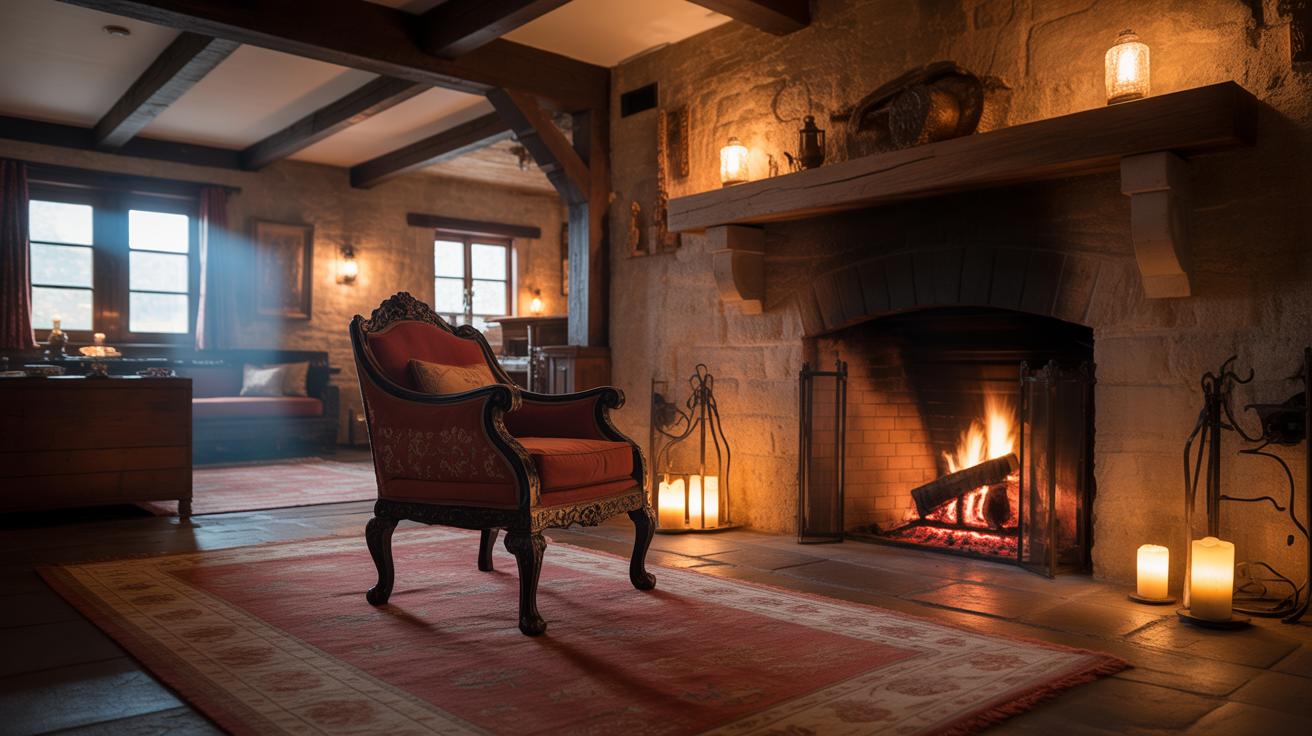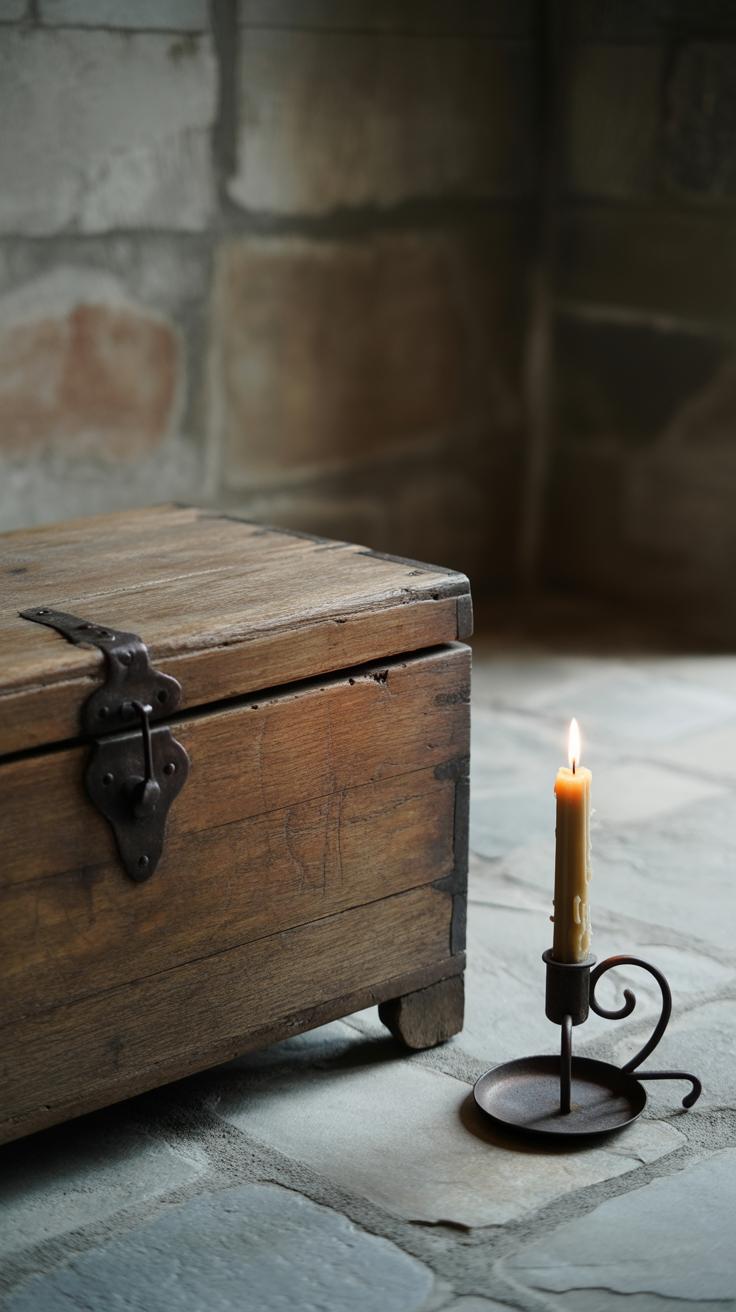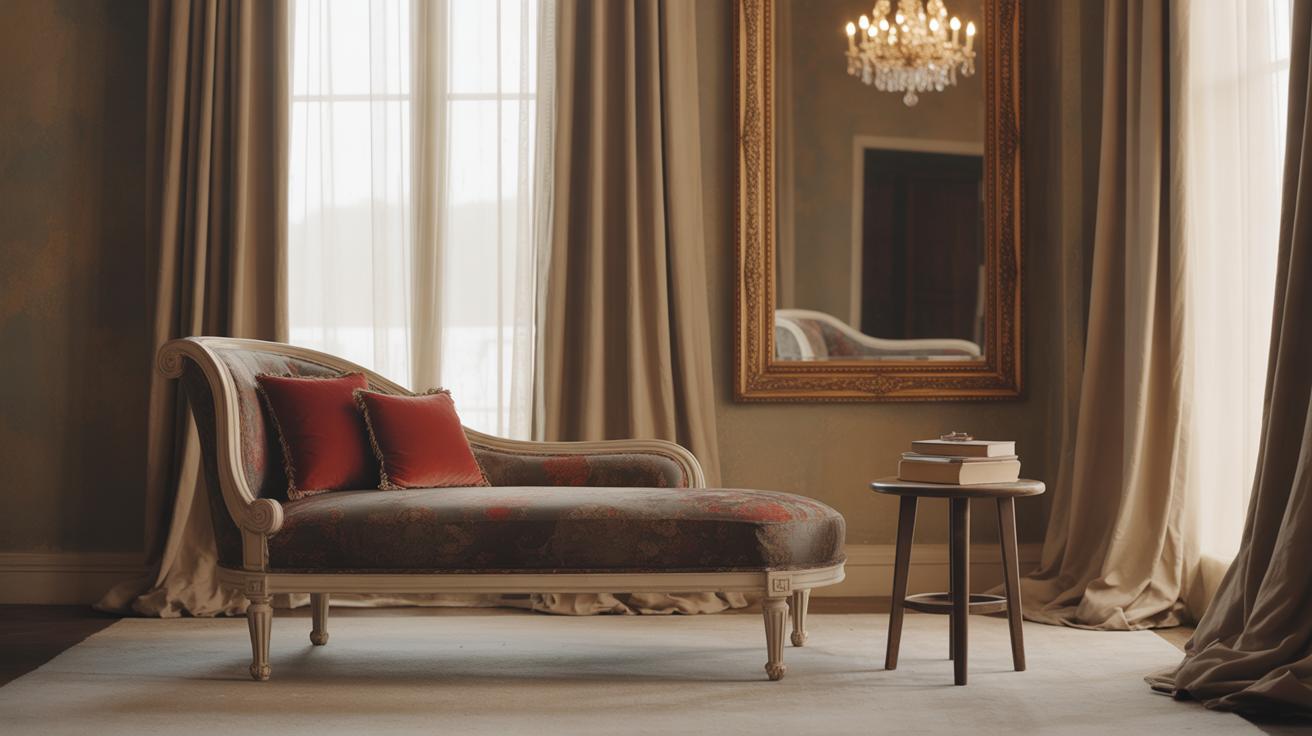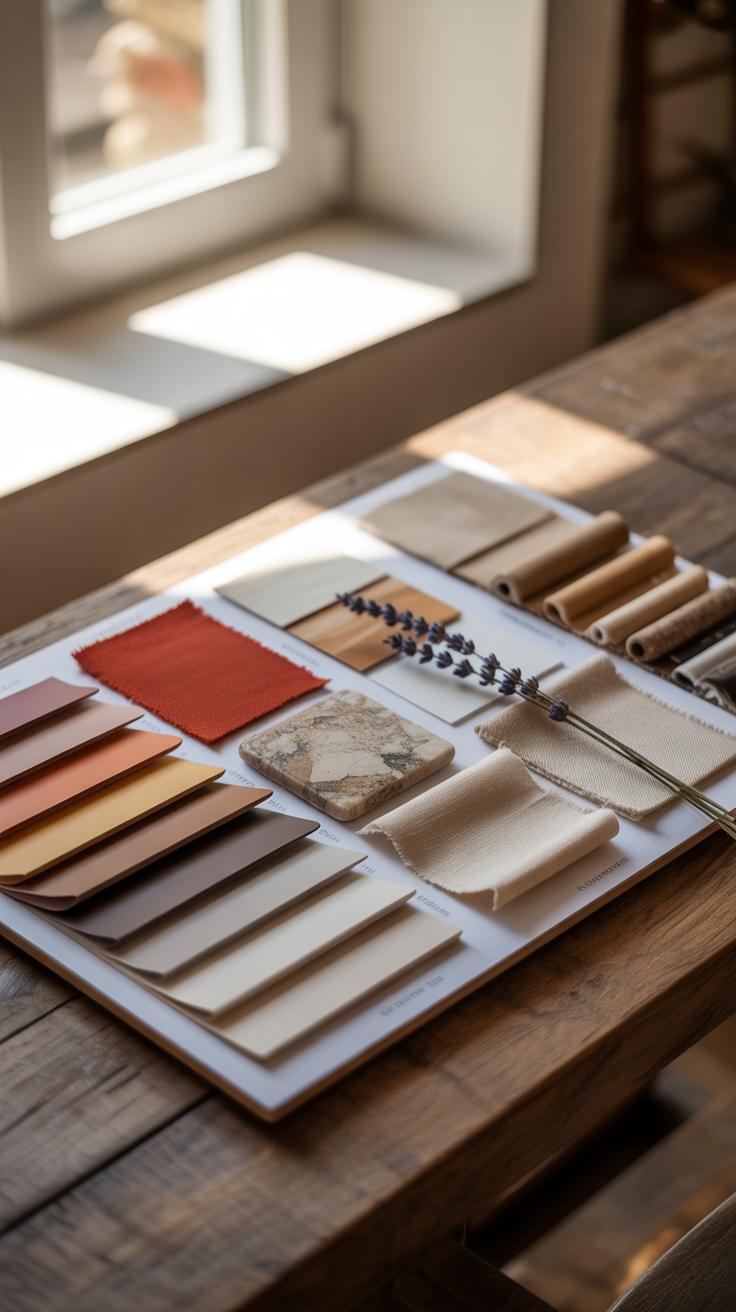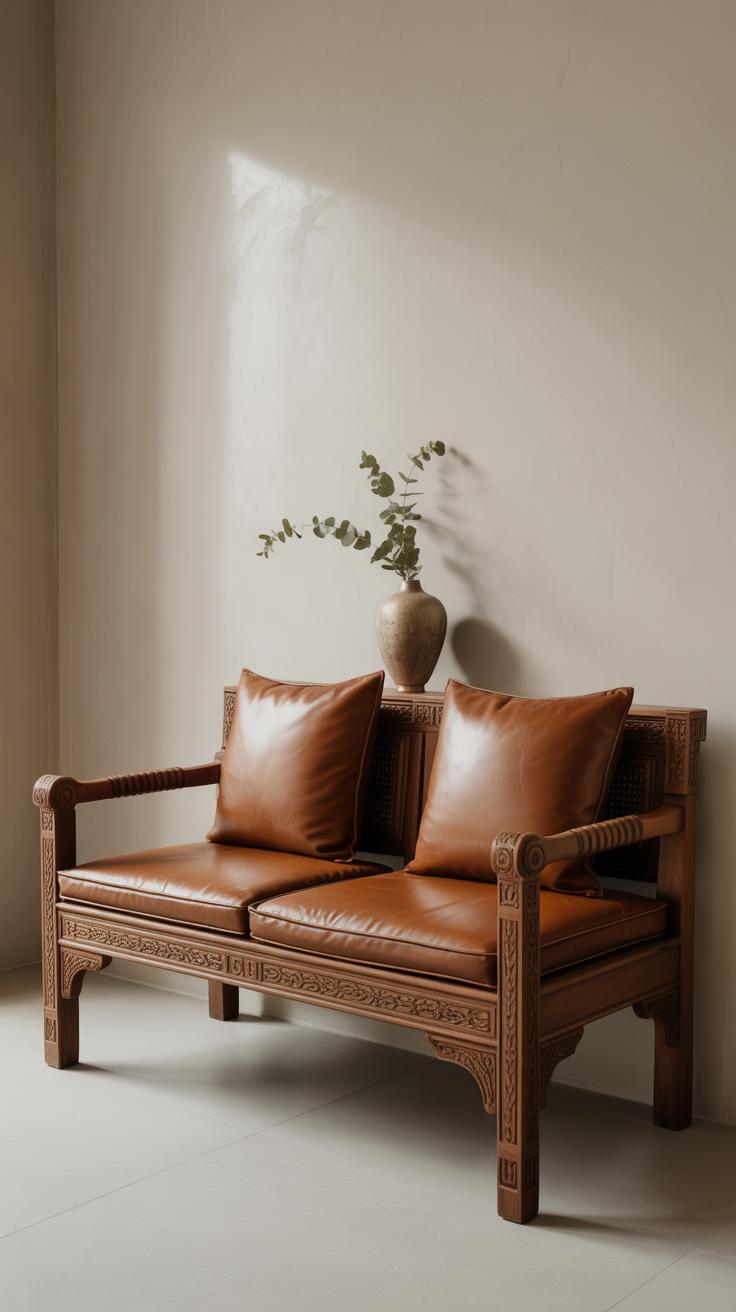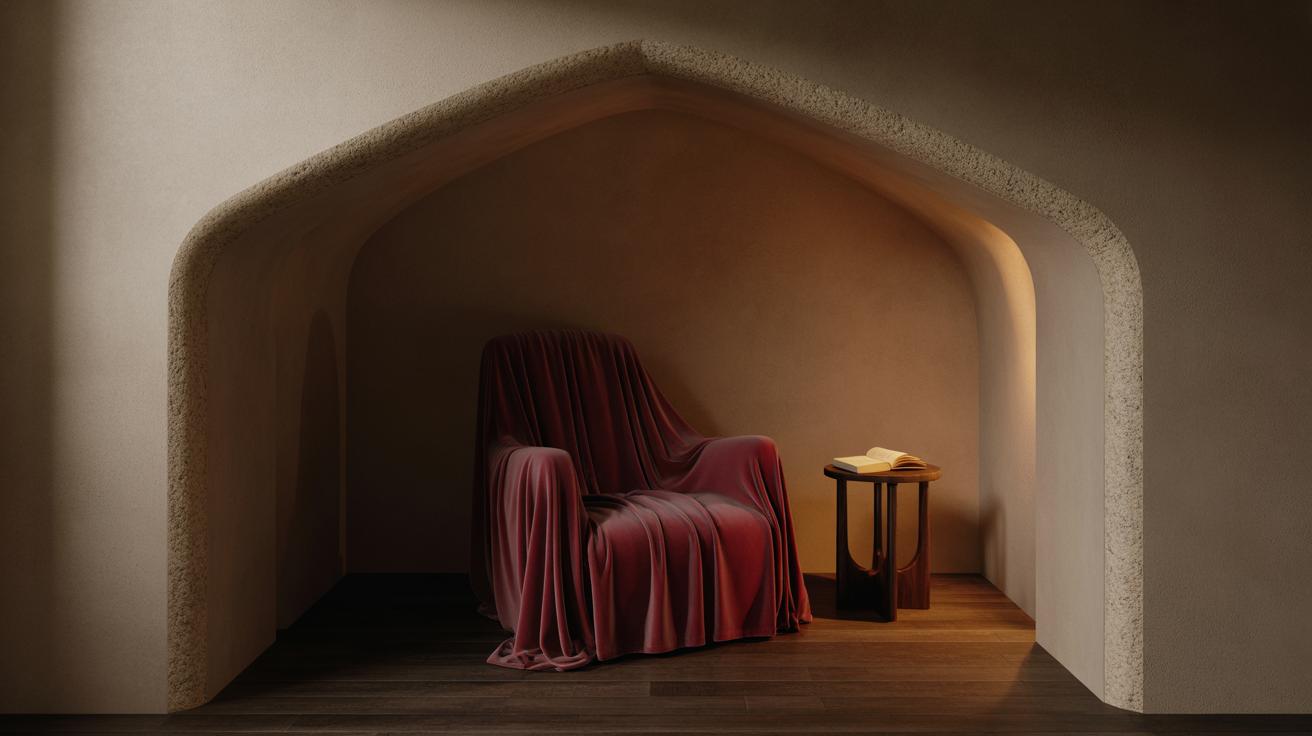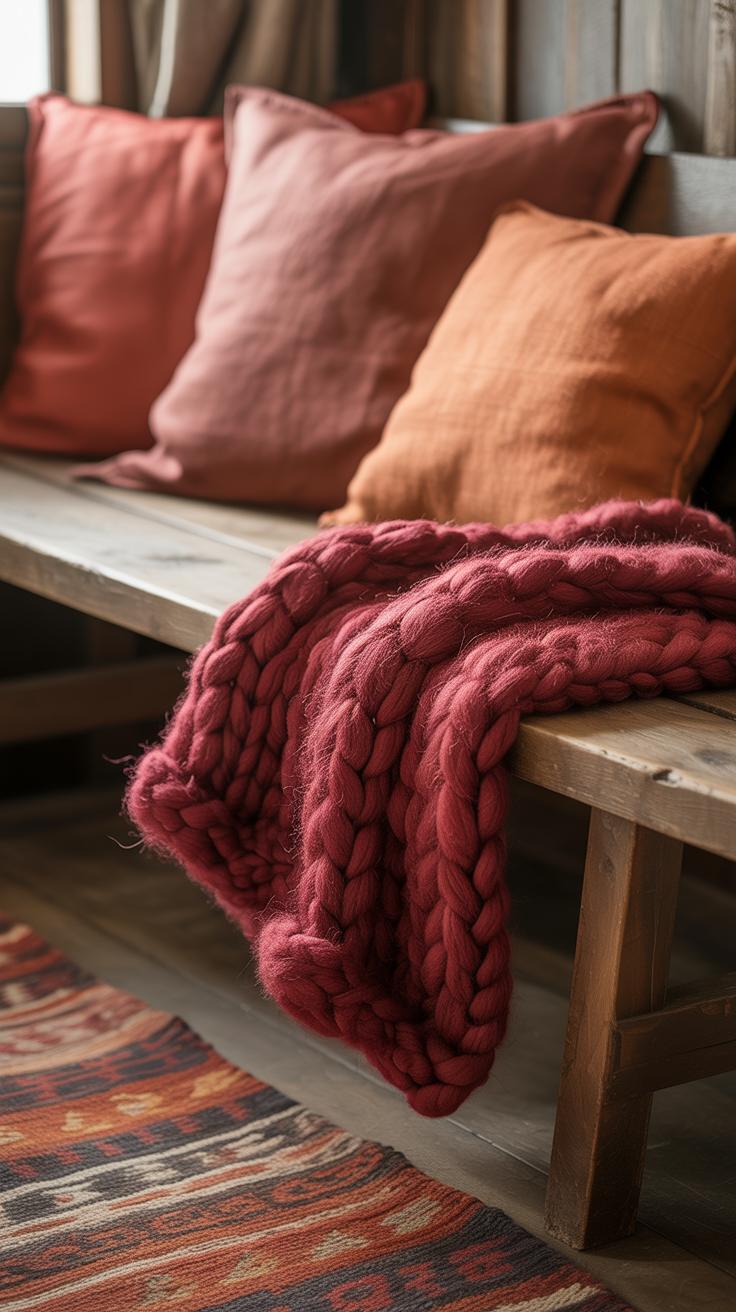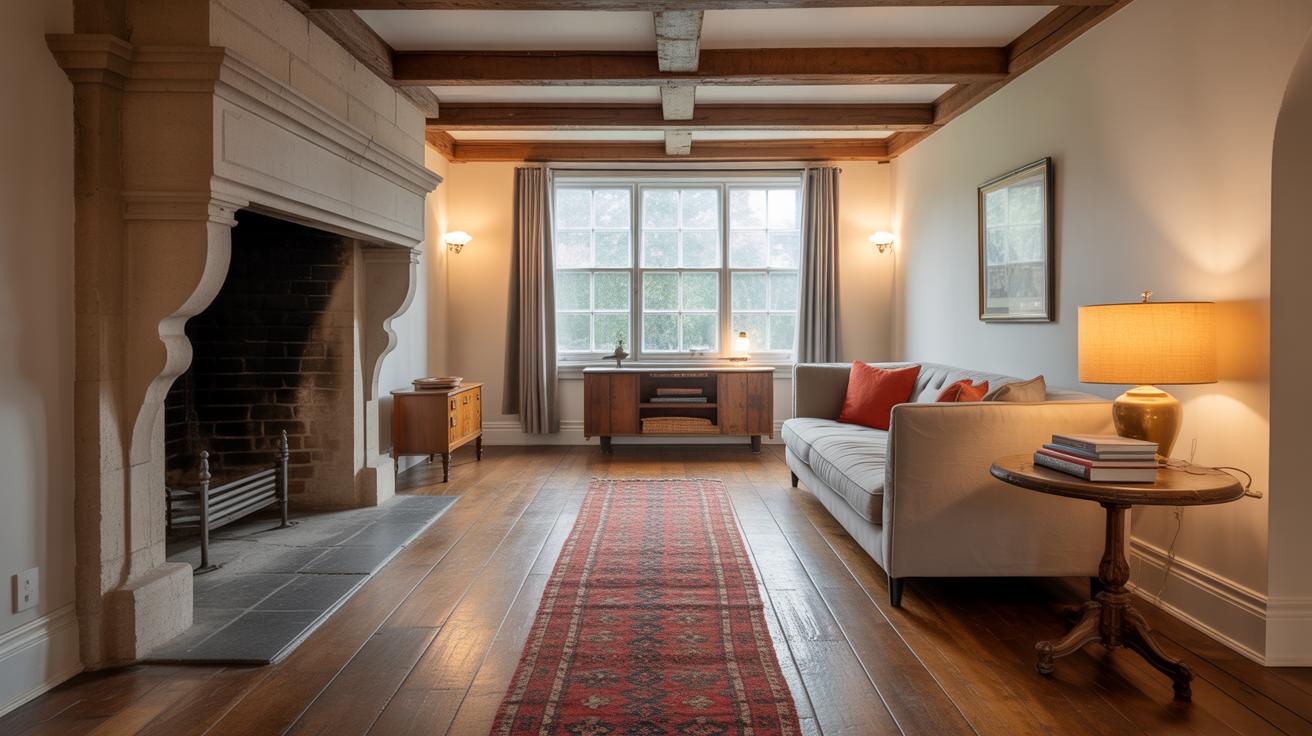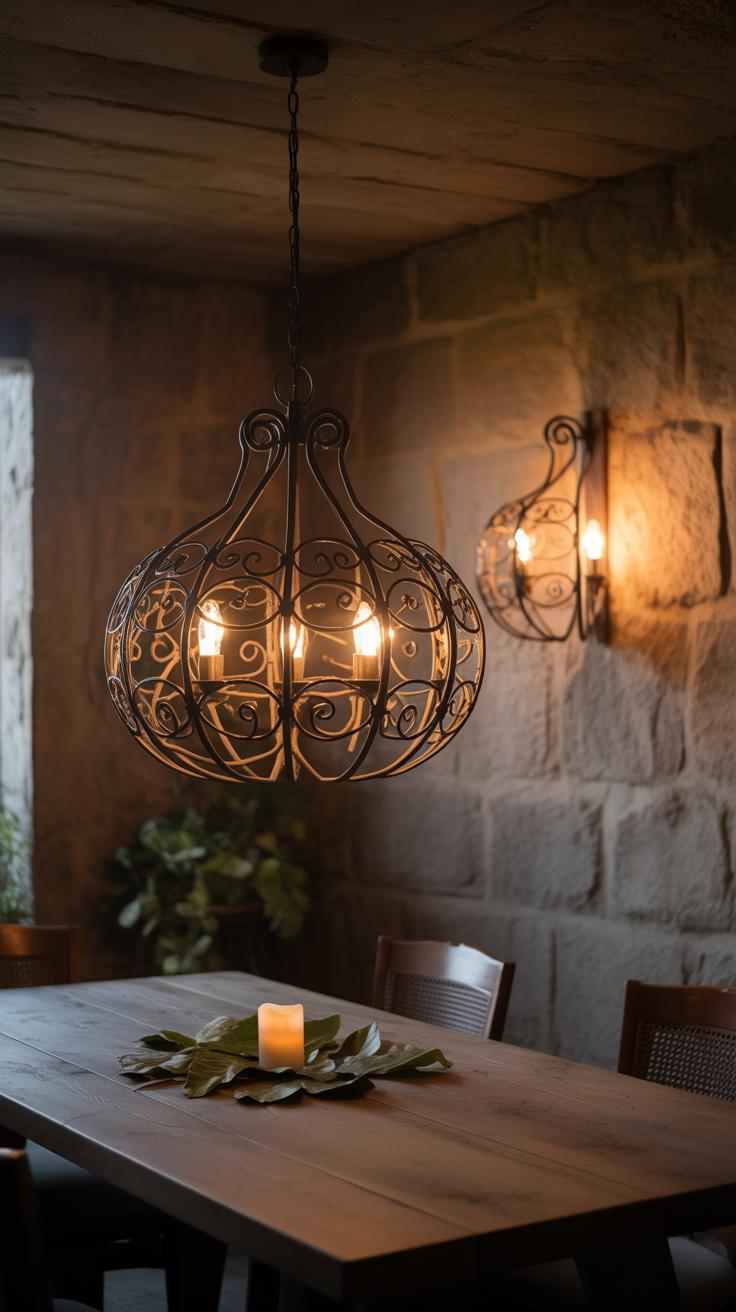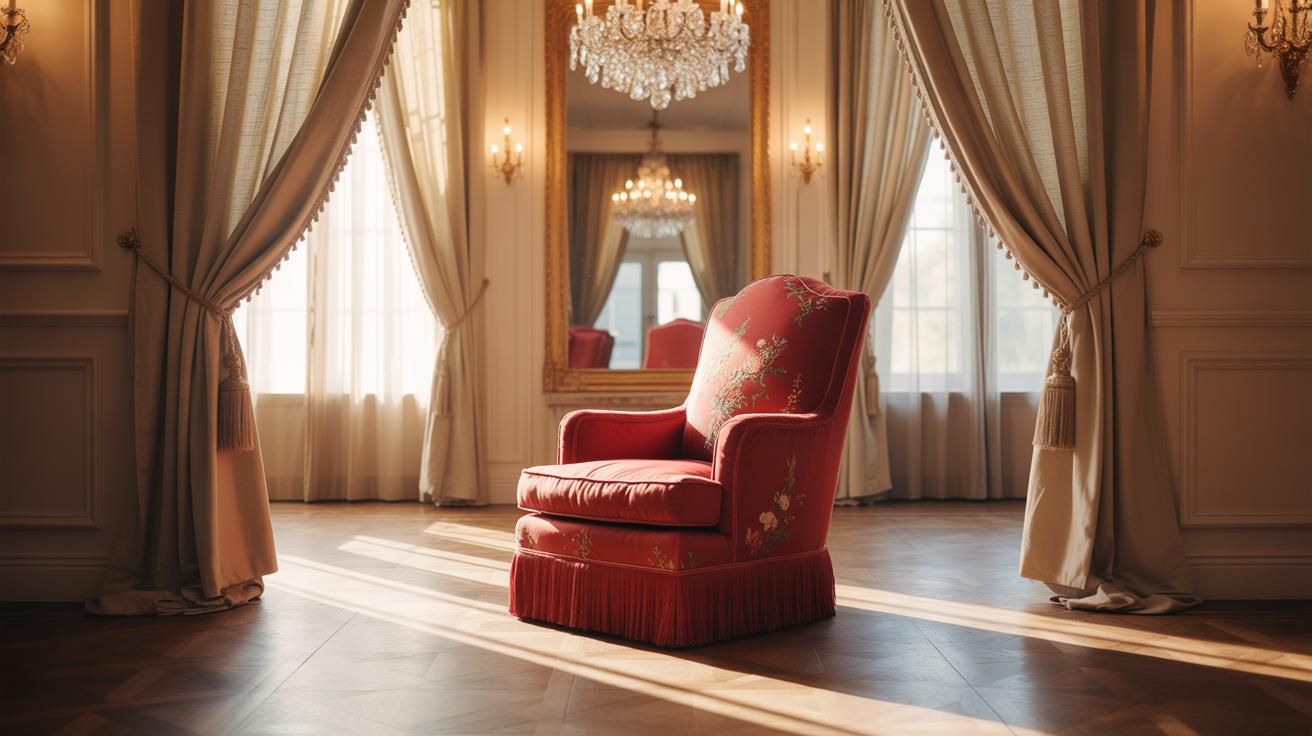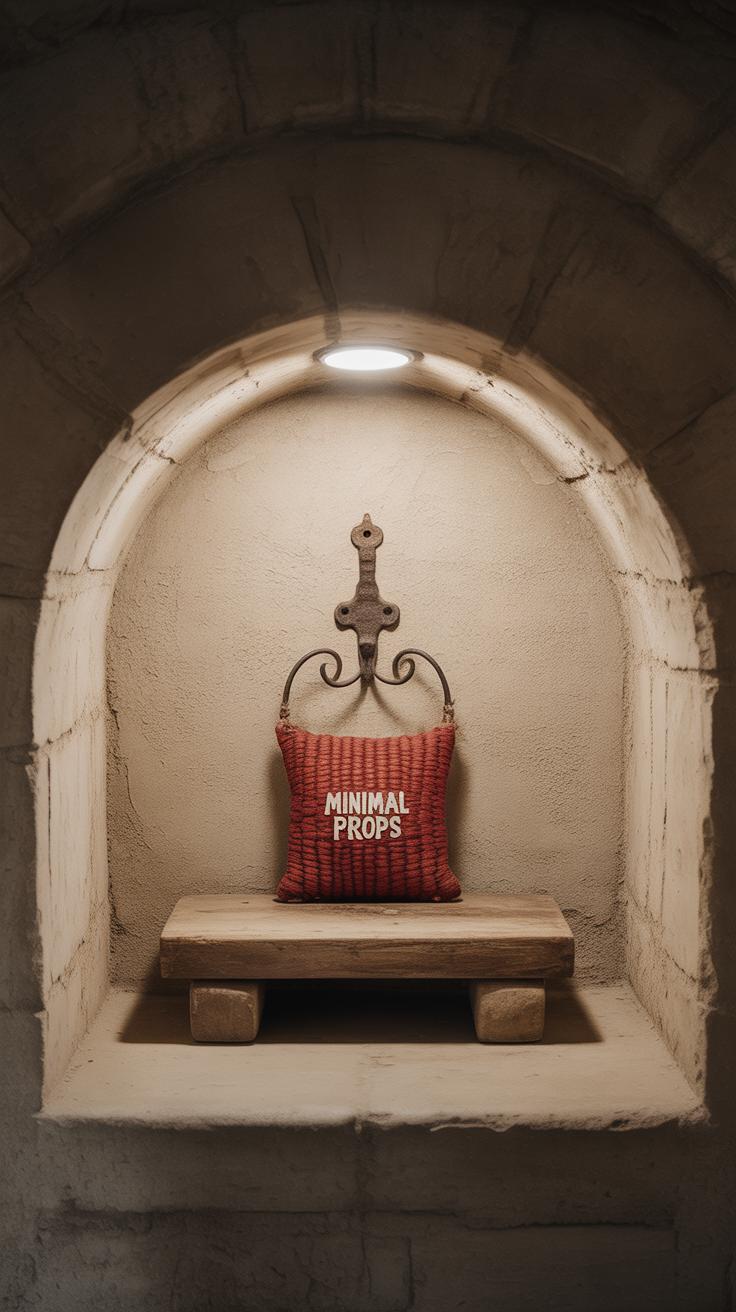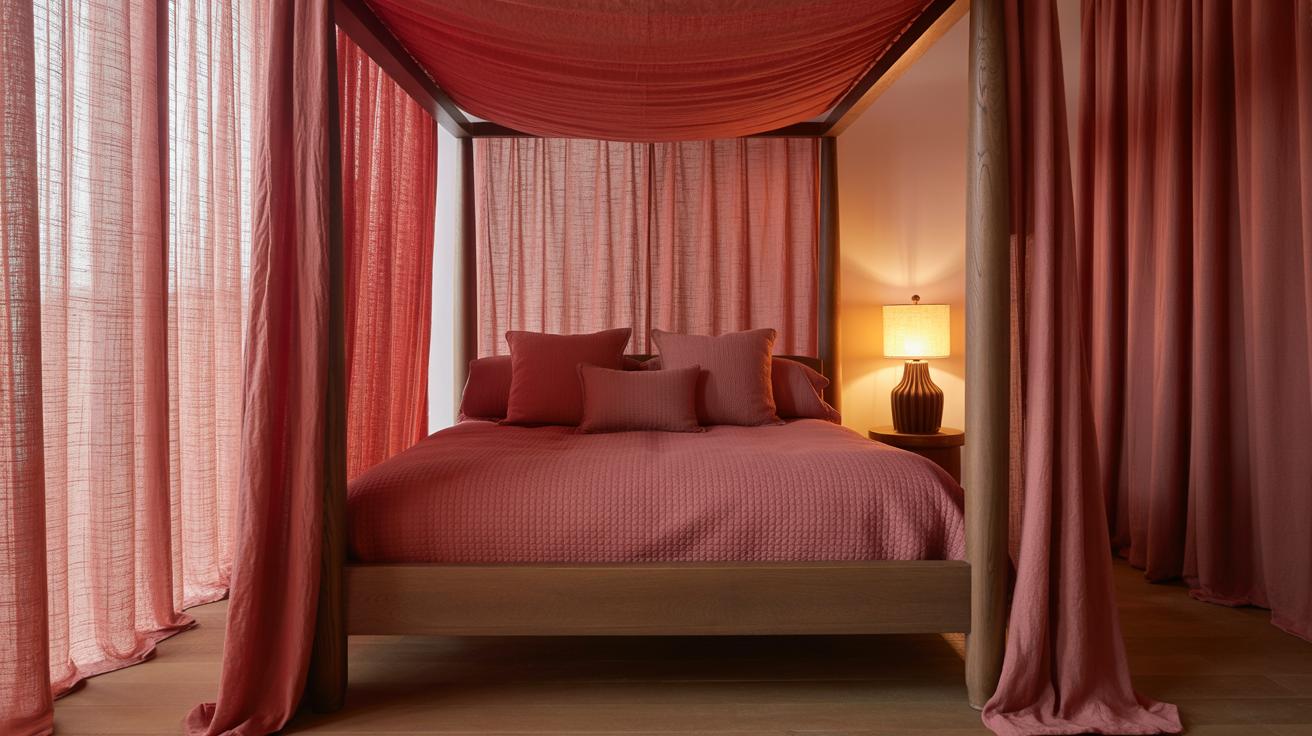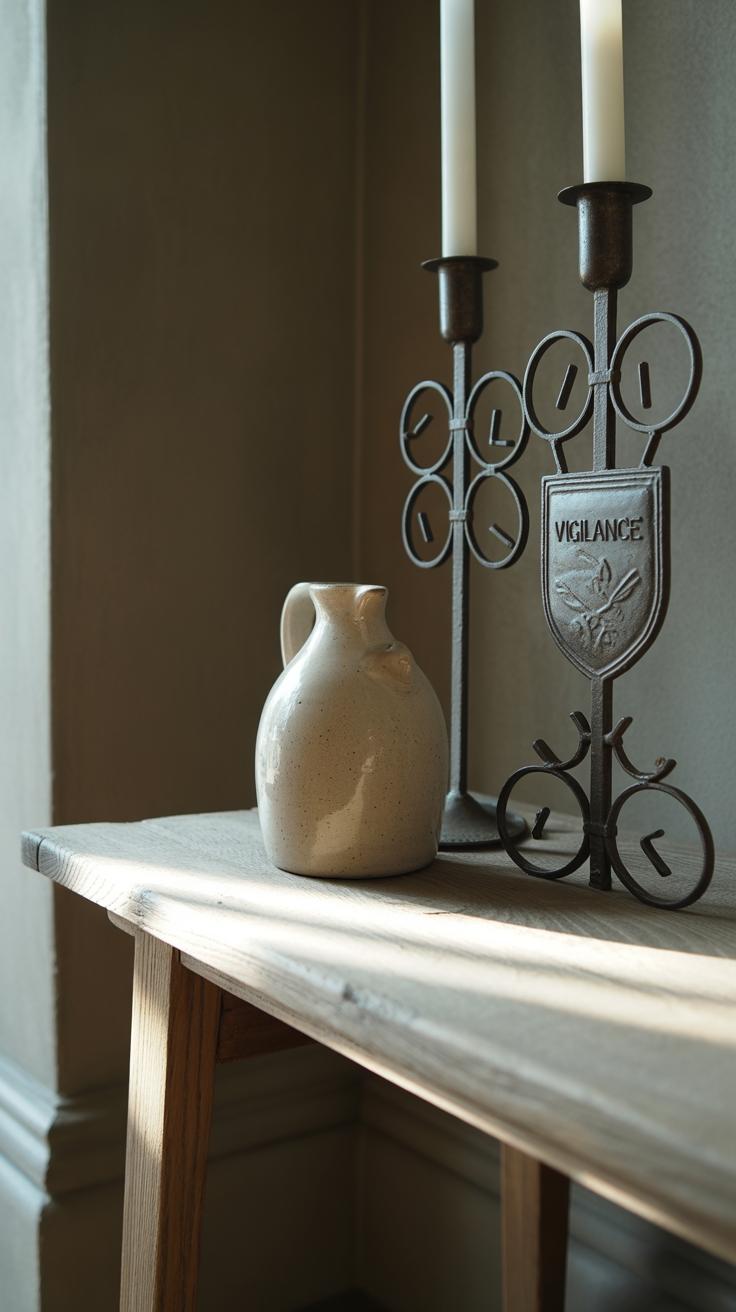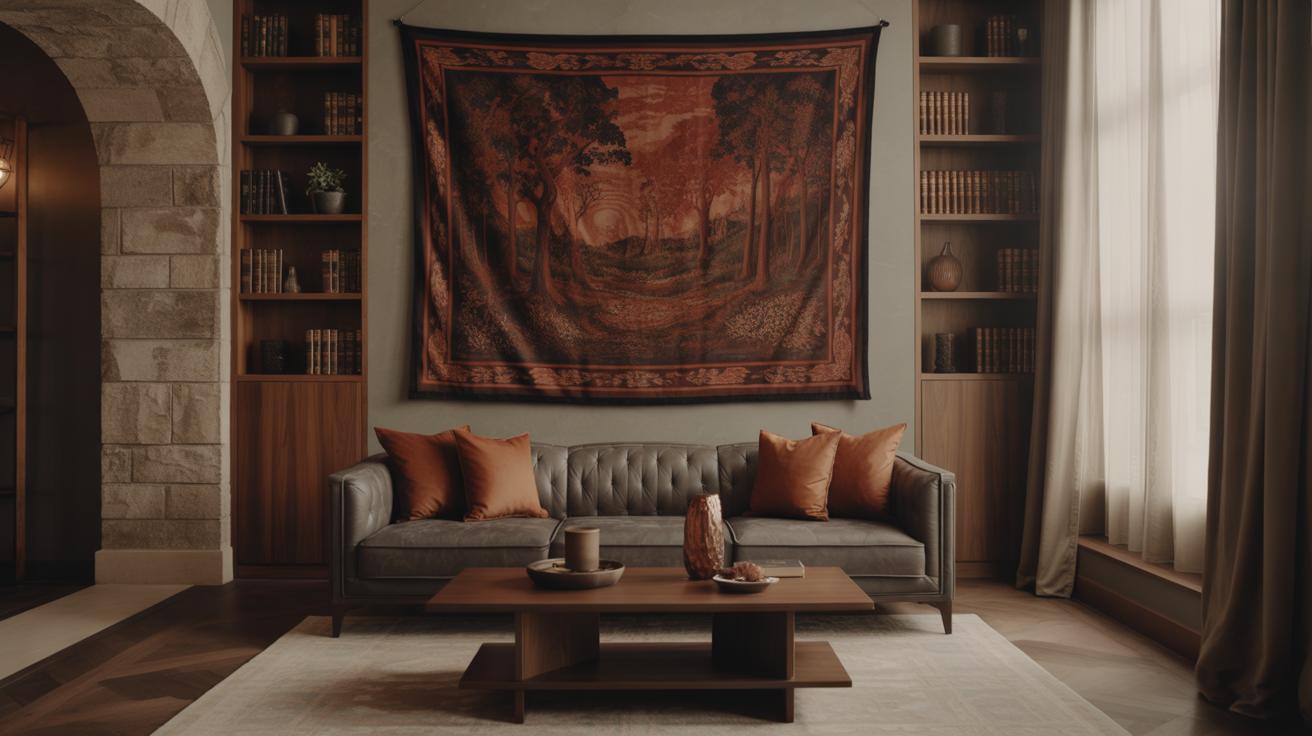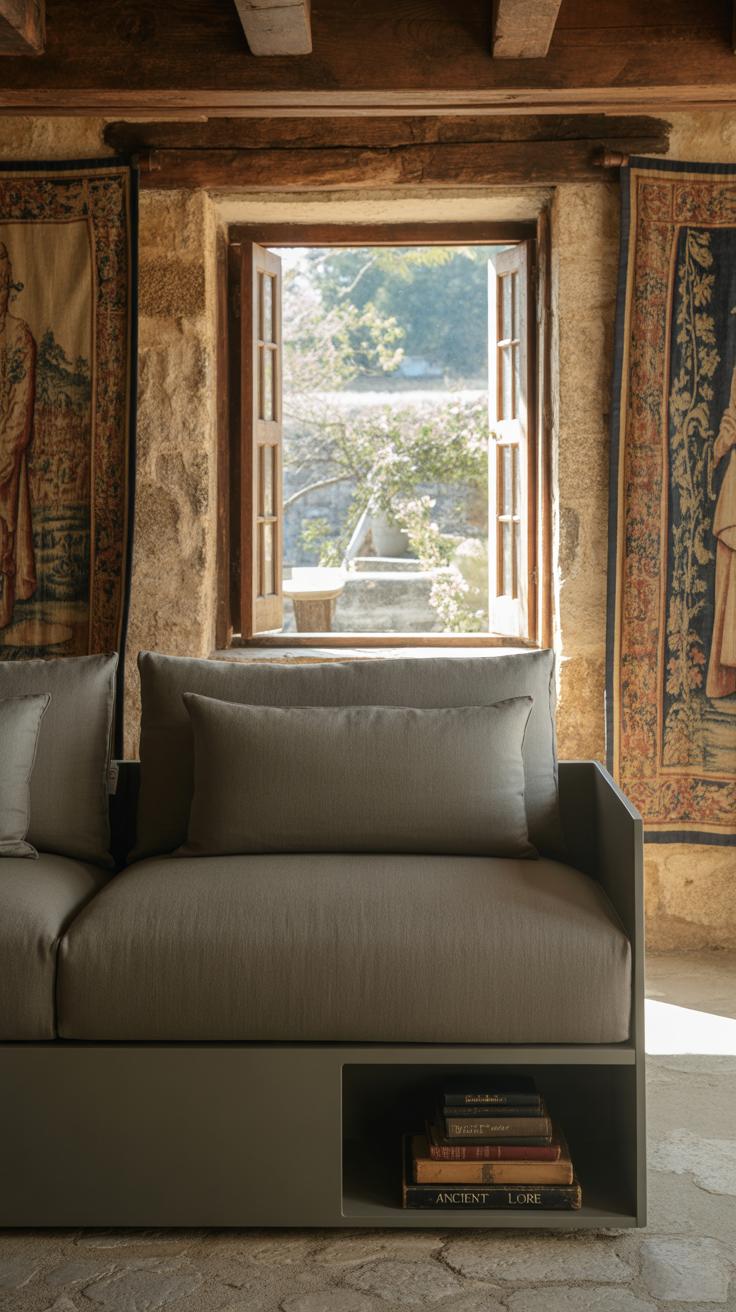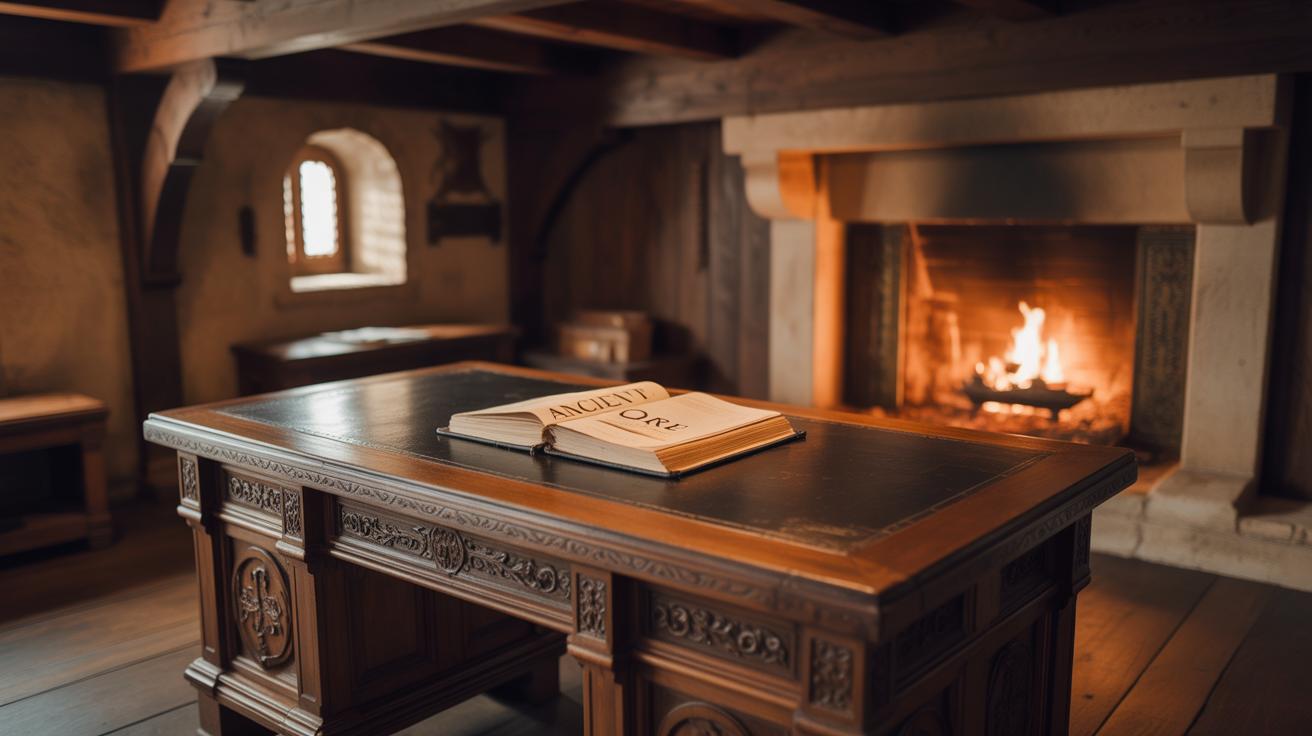Introduction
Medieval aesthetic living rooms bring a warm, rustic charm to homes made of stone and wood. This style uses elements from the Middle Ages, focusing on natural materials and simple shapes. It helps you create a cozy space full of history and character. You can mix old-fashioned ideas with your modern lifestyle to make your living room inviting and unique.
In this article, you will find ideas and tips to decorate your living room with a medieval touch. From choosing colors and furniture to adding decorations, we will explore practical ways to transform your space. Whether you want a complete makeover or small changes, these ideas will guide you through the process.
Understanding the Medieval Aesthetic
What Defines Medieval Style
The medieval aesthetic is grounded in a straightforward, earthy approach to design. It often features materials you’d expect from a time when craftsmanship was hands-on and durable. Think heavy wooden beams, wrought iron accents, and stone or brick elements. Shapes tend to be bold but uneven — arches and rounded forms mix with rough-hewn surfaces rather than smooth or polished finishes.
Colors lean toward deep, muted tones. Rich browns, burnt umbers, deep reds, forest greens, and dark blues reflect natural dyes available back then. These colors rarely appear bright or overly saturated, instead often fading or varying within the same item. It’s a style that doesn’t fuss over perfect symmetry or sleek lines. Imperfections, asymmetry, and a sense of weightiness make the space feel grounded and authentic. It’s the sort of design that you feel more than you just notice.
Why Stone and Wood Homes Match This Look
Stone and wood houses naturally fit with medieval style because they both share that raw, tactile quality. The textures of stone walls and exposed timber beams create a perfect backdrop for medieval décor. They don’t need much embellishment; their rugged nature carries the character and history you want to evoke.
In fact, the irregularities in these materials—such as knots in wood or uneven stone surfaces—enhance the medieval mood. These elements feel honest and straightforward, similar to medieval craftsmanship. The coolness of stone contrasts with the warmth of wood, balancing means the space won’t feel too cold or too heavy.
There’s something about inhabiting a stone and wood home that almost invites medieval styling. Maybe it’s the natural origins, or the way these materials age and patina over time. Either way, this type of architecture supports and amplifies the medieval aesthetic without demanding excessive decoration or modern updates.
Choosing the Right Colors and Materials
Earthy Colors and Textures
If you want to capture that medieval charm, the color palette plays a huge role. Think about browns that echo deep woods, mossy greens that remind you of forest floors, and muted grays resembling old stone walls. These shades ground the space in nature, which was central to medieval interiors. You might wonder if brighter colors fit—well, they rarely did. Instead, those earth tones helped create a calm, enduring atmosphere. Textures matter too. Rough surfaces, like woven wool or coarse linens, complement these colors and bring the tactile sense of the era to your living room. It feels a little like stepping back in time, but in a way that’s inviting and calming.
Natural Materials to Use
Wood, stone, and iron—these are your go-to materials for nailing a medieval look. Thick wooden beams or panels add warmth and structure, while exposed stone walls bring that timeless toughness. You might choose a stone fireplace or floor to anchor the room visually and physically. Iron appears mostly in fixtures and hardware: think wrought-iron light sconces or curtain rods. These details add a subtle weight without overwhelming the space. Mixing these materials might sometimes feel challenging: balancing cold stone with warm wood isn’t always straightforward. But when you get it right, the space feels authentic, honest, and surprisingly comfortable. Don’t be afraid to show the wear or imperfections; they often add character rather than detract from it.
Medieval Furniture Choices
When picking furniture for a warm stone and wood living room, medieval style leans toward solid, simple pieces. Think heavy wooden tables with thick legs, roughly hewn benches, and sturdy chests that look as if they could last centuries. These items often feature straightforward designs, without intricate carvings or fuss, but their weight and presence speak volumes. I’ve noticed that a rough-hewn oak table paired with a worn leather bench instantly feels authentic while grounding your space.
Wood types like oak or walnut work best—they show wear nicely over time, which is part of their charm. You might want to seek out antique shops or craftsmen specializing in period pieces. Yet, it’s also easy to recreate this look by choosing minimalist, rustic furniture that echoes those medieval forms. Sometimes, that imperfect finish or slightly uneven surface is just what the room needs.
But medieval style doesn’t mean giving up on comfort. Blending these solid wooden pieces with modern cushions, throws, or an upholstered armchair softens the look and adds coziness. It’s the contrast that can make a room inviting, not just impressive. You can ask yourself: how formal do I want my living room to feel? And, can medieval style coexist with practicality? The answer, I’ve found, is often yes if you’re open to mixing eras.
Textiles and Soft Furnishings
Textiles played a surprisingly big role in medieval living rooms. They weren’t just about decoration but functioned as insulation against cold stone walls and drafts. When choosing fabrics for your medieval-style space, think heavy weight—wool, velvet, damask. These materials have a certain roughness and heft that suit the era’s aesthetic and feel authentic.
Patterns were often intricate but not overly busy. Floral or geometric designs, sometimes heraldic motifs, were common. Deep, muted colors like burgundy, forest green, and navy blue tended to dominate, though richer reds and golds appeared in wealthier homes. It’s tempting to go wild with brightness, but holding back a little keeps the mood grounded, warm.
Soft furnishings like cushions and rugs aren’t just an afterthought but crucial comforts. Look for cushions stuffed with natural materials—down or wool batting—and covered in similarly heavy fabrics. They soften wooden benches and stone seating while blending with the medieval vibe.
Rugs can warm a cold floor and tie your room together. Handwoven designs, perhaps with simple patterns or stripes, work well. Place them in gathering spots to add both color and comfort. I often find that adding just a few cushions and a rug changes a room’s feel completely—making it inviting without breaking style.
Lighting for a Medieval Feel
Lighting in a medieval-inspired living room isn’t just about brightness. It’s about atmosphere, mood, and a sense of time. Back then, rooms were usually dim, lit mostly by natural light during the day and flickering flames at night. That kind of lighting invites you to slow down, to appreciate the textures and tones of stone and wood. It’s easy to forget how much lighting shapes the experience of a space.
Natural and Firelight Influences
Natural light was highly valued in medieval homes, but windows were smaller and often set deep within thick walls. This created pools of soft, indirect light rather than harsh brightness. Replicating this means you might want to go easy on heavy curtains to allow some daylight in, but avoid overly modern large panes that flood the room too much.
Firelight, or candlelight, offers warmth and movement. The warm glow and dancing shadows are part of what define medieval interiors. You might think about grouping candles or using flameless LED candles with a flicker effect to capture that feeling. The idea is not just illumination but also a gentle, comforting flicker that makes the stone and wood feel alive.
Using Lamps and Lanterns
When electric lighting is necessary, lamps and lanterns can help maintain that historic vibe. Iron or wrought-iron fixtures with simple, sturdy designs are good choices. Look for lantern-style lamps that mimic the shapes of traditional medieval sconces or hanging lamps. Avoid sleek or overly polished materials—they rarely fit the cozy, aged look.
Consider multi-branched candleholder chandeliers or lanterns with glass panes slightly smoked or textured to diffuse light softly. Portable oil lamps, whether real or replicas, bring an authentic touch if you want to mix real and electric light. You’ll find that with the right lighting, your room doesn’t just look medieval—it feels medieval, too.
Wall Decor and Architectural Details
Tapestries and Wall Hangings
You can’t talk about medieval walls without thinking about tapestries. These large, woven pieces served more than just an ornamental purpose back then. They added warmth and insulation, which was crucial in those cold stone homes. They often depicted scenes of nature, battles, or legends, giving rooms a story-like atmosphere that you might want to recreate. If you’re going for that authentic vibe, aim for heavy fabrics with rich, deep colors—think dark reds, golds, or forest greens.
But keep in mind, tapestries don’t need to be elaborate or perfectly historical-looking. Sometimes, simpler patterns can feel just as medieval if they’re paired right with other elements in the room. Also, tapestries soften stone walls, which can otherwise feel a bit harsh or cold, making your living room more inviting.
Wood Beams and Stone Elements
Exposed wood beams are almost synonymous with medieval interiors, aren’t they? Showing off these structural features gives your room a grounded, rustic feel. If your ceiling has beams, don’t hide or cover them up. Instead, clean and refinish them to bring out their natural grain and character. Dark-stained wood tends to look more authentically medieval than pale or glossy finishes.
Stone walls or accents are just as important. Leaving stone exposed or using stone veneers can create that tactile, solid presence medieval rooms had. Oddly shaped stones or rough textures add personality—you don’t want things too polished. If you don’t have natural stone, try fireplace surrounds or shelves made of rugged stone to echo that medieval craftsmanship.
When these elements come together, they create a backdrop that feels timeless and comforting rather than stark. But it’s a bit of a balance, and I’ve found sometimes less is more. Too many elements at once can weigh down a room, so think about what makes the biggest impact for you.
Adding Medieval Accessories
Medieval accessories can quietly shape the mood of your living room. Think of those simple iron candlesticks—you might have seen them in old films or museums. They don’t just provide soft light; they add a tangible sense of history. Their rough, handcrafted look contrasts nicely with smooth stone and warm wood, grounding the space in the past. Alongside those, clay pots offer a connection to everyday medieval life. They don’t need to be elaborate; sometimes a modest, unglazed pot speaks louder than an ornate vase.
Books are another often overlooked detail. Look for volumes printed in fonts that echo medieval scripts, or even facsimiles of manuscripts. Placing a few on a wooden shelf or stacked on a side table can suggest a lived-in space with stories to tell. Artifacts also fit well—items like old keys, rustic goblets, or small carved wooden figures. These pieces make the space feel personal and curated, rather than staged.
Wonder what pulls it all together? It’s the way these objects interact with your furniture and walls, creating layers of texture and interest. When arranged thoughtfully, these accessories live beyond decoration; they invite you to imagine the rhythms of a medieval home. Maybe your own room can become a quiet portal to that time, without feeling like a museum display.
Balancing Medieval Style with Modern Needs
Medieval aesthetics bring a strong sense of history and character to a space. Still, your living room has to work for today’s lifestyle, right? You want that warm stone and wood feel without losing practicality. Striking this balance can be tricky but not impossible.
For comfort, think about mixing medieval materials with modern seating. You might find that a heavy wooden chair with plush cushions works better than stiff benches. And, well, you can’t ignore technology—TVs, sound systems, and chargers. Carving out spaces where these fit neatly, maybe behind rustic panels or within antique-style cabinets, keeps the medieval vibe intact while addressing daily needs.
Finding your own take on medieval style is part of the fun. Maybe you lean into darker woods or prefer lighter tones, or you want a cozy nook with weighted curtains and softer fabrics rather than all stone and leather. The key is staying true to what feels right for you—don’t hesitate to tweak the style until it fits your pace and taste.
Ask yourself what parts of medieval design resonate most—Is it the textures, the colors, or the shapes? Let those guide your choices, even if it means bending some “rules.” After all, a room should serve your life as much as your eye.
Conclusions
Medieval aesthetic living rooms offer a warm, welcoming atmosphere perfect for stone and wood homes. By using natural materials, classic furniture styles, and thoughtful decorations, you create a living space that feels timeless and comfortable. The medieval style connects you with history while fitting into your modern daily life.
Remember, you can adapt medieval ideas in small or big ways to reflect your personal taste. Each choice helps bring a bit of the past into your home, making your living room a special place to relax and enjoy.

